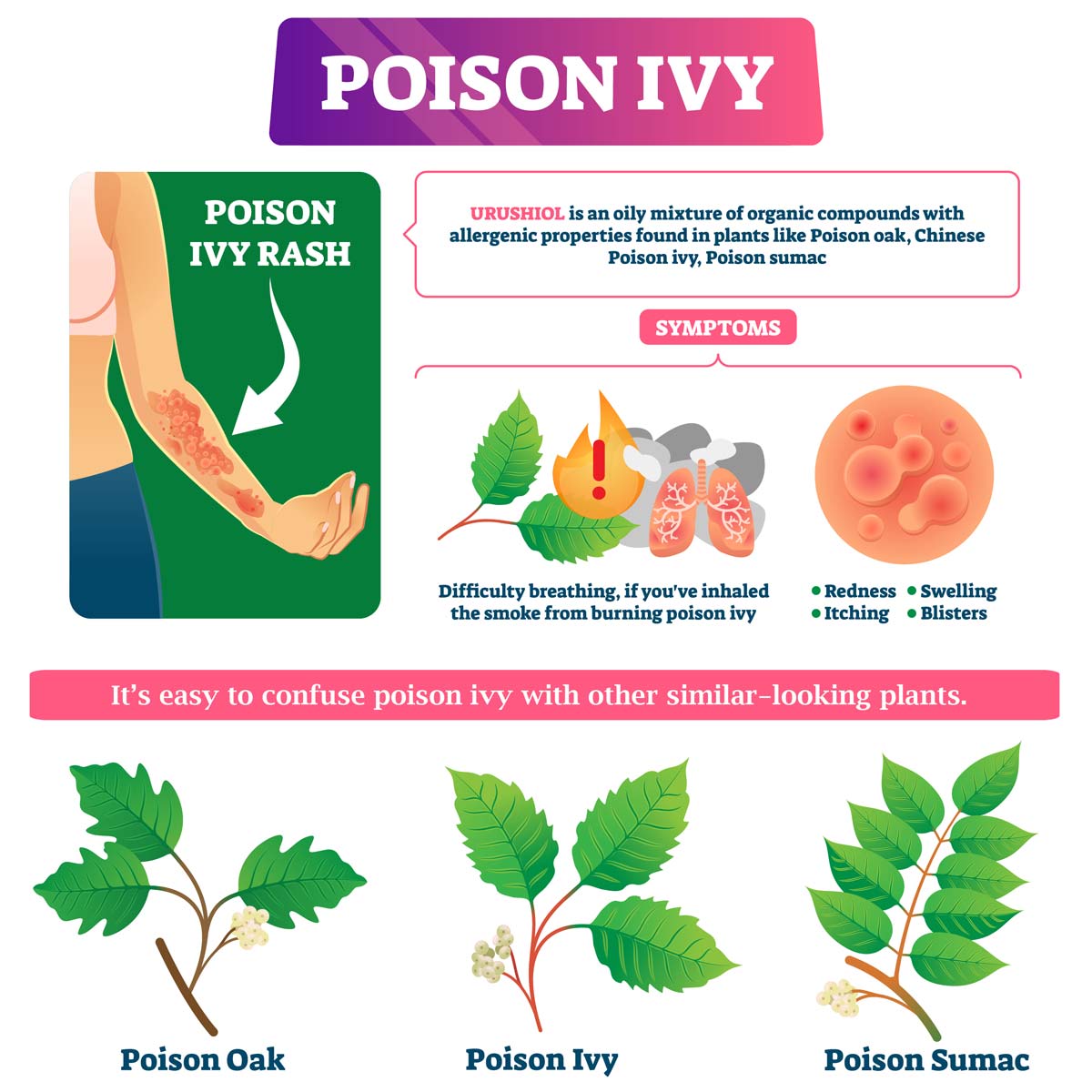You’re outside, mower in hand, ready to tackle your overgrown yard. But then you spot it: the telltale leaves of poison ivy lurking in your lawn.
Instinctively, you wonder, “Can you cut poison ivy with a lawn mower? ” It’s a tempting thought—get rid of the nuisance plant while trimming your grass. But before you charge ahead, there are crucial things you need to know. This question isn’t just about yard maintenance; it’s about your health and safety.
Touching or inhaling poison ivy’s toxic oils can lead to itching, rashes, and other unpleasant reactions. What if mowing causes these oils to spread? What if it makes things worse? Stick with us, and we’ll guide you through the risks, rewards, and smarter alternatives. You’ll find out whether the convenience of mowing outweighs the potential hazards, and we’ll offer safe, effective strategies to deal with poison ivy for good. Keep reading—you might just save yourself from an itchy ordeal.

Credit: www.reddit.com
Dangers Of Mowing Poison Ivy
Mowing poison ivy can spread its harmful oils into the air. This may cause skin rashes and breathing problems. Use caution and protective gear to avoid contact with this hazardous plant.
Mowing your lawn can be a satisfying task, but encountering poison ivy is a different story. Cutting poison ivy with a lawn mower might seem like a quick solution, but it can lead to serious consequences. Before you start your mower, it’s essential to understand the dangers involved. Using a lawn mower on poison ivy can release its toxic oil, urushiol, into the air. This oil can then settle on your skin, clothing, and even your mower. It’s not just about direct contact with the plant; the oil can cause a rash or severe allergic reactions.Airborne Urushiol Risks
When poison ivy is chopped up by a mower, the oil becomes airborne. Inhaling these tiny particles can lead to internal irritation. It’s not just your skin that’s at risk; your lungs and eyes can be affected too.Contamination Of Equipment
Your lawn mower and other tools can become contaminated with urushiol. Imagine how easy it is to unknowingly spread this oil around your home or garage. Proper cleaning of your equipment is crucial, but wouldn’t it be better to avoid contamination in the first place?Impact On Pets And Family
Think about your pets and family members who frequent the yard. They can come into contact with the oil left on the grass or tools, leading to unexpected allergic reactions. Would you want your pet to suffer from a painful rash just because of a careless mowing job?Preventative Measures
Instead of mowing, consider safer alternatives like using a weed killer specifically designed for poison ivy. If you prefer a natural approach, pulling it out by the roots while wearing protective gear can be effective. Always have a plan to safely dispose of the plant to prevent further exposure. In your quest for a pristine lawn, remember that safety comes first. Have you ever faced a similar situation? Share your thoughts and tips in the comments below!Safe Alternatives For Removal
Cutting poison ivy with a lawn mower is risky. The plant can release toxic oils into the air. These oils can cause skin irritation. Finding safe alternatives for removal is crucial. This reduces the risk of exposure and protects your health.
Manual Removal
Manual removal is effective. Use gloves to protect your skin. Pull the roots to prevent regrowth. Dispose of the plant properly. This method requires caution but is safe.
Vinegar Solution
Vinegar is a natural herbicide. Mix vinegar with salt and soap. Spray the solution on the poison ivy. This kills the plant without chemicals. It’s a safe and eco-friendly option.
Boiling Water
Boiling water can kill poison ivy. Pour directly on the plant. This method is simple and chemical-free. It may require several applications. Be careful not to burn nearby plants.
Herbicide Treatment
Commercial herbicides are effective. Choose products designed for poison ivy. Follow instructions carefully. Use protective gear during application. Herbicides offer quick and reliable results.
Covering And Suffocation
Cover the poison ivy with plastic. This blocks sunlight and air. The plant dies from lack of nutrients. It’s a slow process but effective. Ensure the cover is secure to prevent escape.
Protective Measures And Gear
Using a lawn mower to cut poison ivy can spread its toxic oils. Wear protective gear like gloves and masks to avoid skin irritation. Carefully clean the mower afterward to prevent further contamination.
Dealing with poison ivy in your lawn can be a daunting task. If you’ve ever thought about using a lawn mower to tackle this pesky plant, it’s crucial to arm yourself with the right protective measures and gear. Without proper precautions, you risk exposure to the plant’s irritating oils, which can lead to uncomfortable rashes or worse. Let’s explore how to stay safe and protect yourself while cutting poison ivy with a lawn mower. ###Wear Proper Clothing
Your clothing is your first line of defense against poison ivy. Opt for long sleeves, pants, and closed-toe shoes to cover as much skin as possible. Choose materials that are sturdy and less likely to let oils seep through. Don’t forget gloves and a wide-brimmed hat for additional protection. ###Use Protective Eyewear
While mowing, debris and plant particles can easily fly up towards your face. Invest in a pair of safety goggles or a face shield. This not only protects your eyes from irritants but also prevents the accidental transfer of poison ivy oils to your face. ###Consider A Face Mask
Breathing in particles from poison ivy can be harmful. A simple dust mask or a more robust respirator can safeguard your respiratory system. Have you ever thought about how those tiny particles might affect your health over time? ###Choose The Right Gloves
Rubber gloves provide better protection than fabric ones. They prevent oils from soaking through and reaching your skin. After mowing, remember to wash them thoroughly, or better yet, dispose of them safely. ###Clean Your Equipment
Post-mowing, it’s essential to clean your lawn mower and any other equipment used. Poison ivy oils can linger and transfer to other surfaces. Use a degreaser or specialized plant oil remover to ensure your tools are safe for future use. ###Shower Immediately Afterwards
After the task, showering promptly can reduce the risk of developing a rash. Use soap and cool water to wash off any oils that might have reached your skin. Have you noticed how often we overlook this simple yet effective step? ###Be Mindful Of Your Environment
While focusing on protective gear, don’t forget to assess your surroundings. Are there other plants or hazards that might complicate your task? This awareness can save you from unexpected risks. By following these protective measures, you can safely manage poison ivy in your lawn. Remember, preparation and the right gear make all the difference. Are you ready to tackle that poison ivy patch with confidence?
Credit: www.preen.com

Credit: www.reddit.com
Conclusion
Cutting poison ivy with a lawn mower can spread its oils. This may cause skin irritation and allergic reactions. It’s safer to remove poison ivy manually. Wear gloves and long sleeves for protection. Dispose of the plant carefully to avoid contact.
Consider professional help for large infestations. Always clean tools after use. This prevents the spread of harmful oils. Keep your lawn mower free from poison ivy residue. This ensures safe and efficient yard care. Remember, safety is key when dealing with poison ivy.
Protect yourself and your garden effectively.

